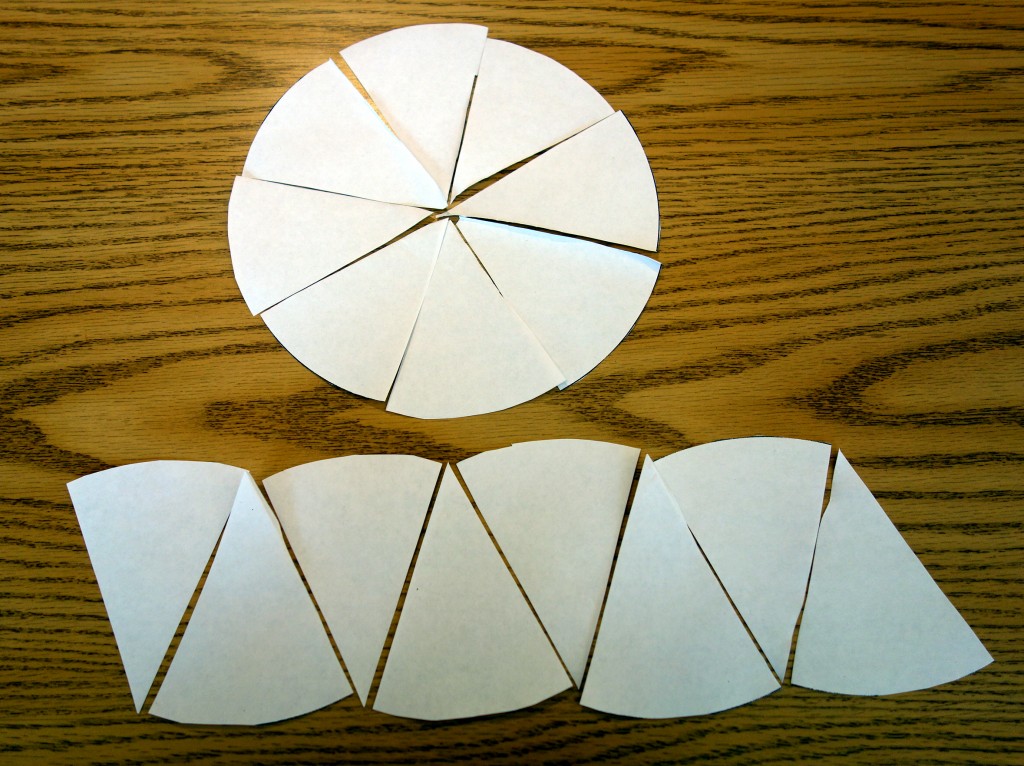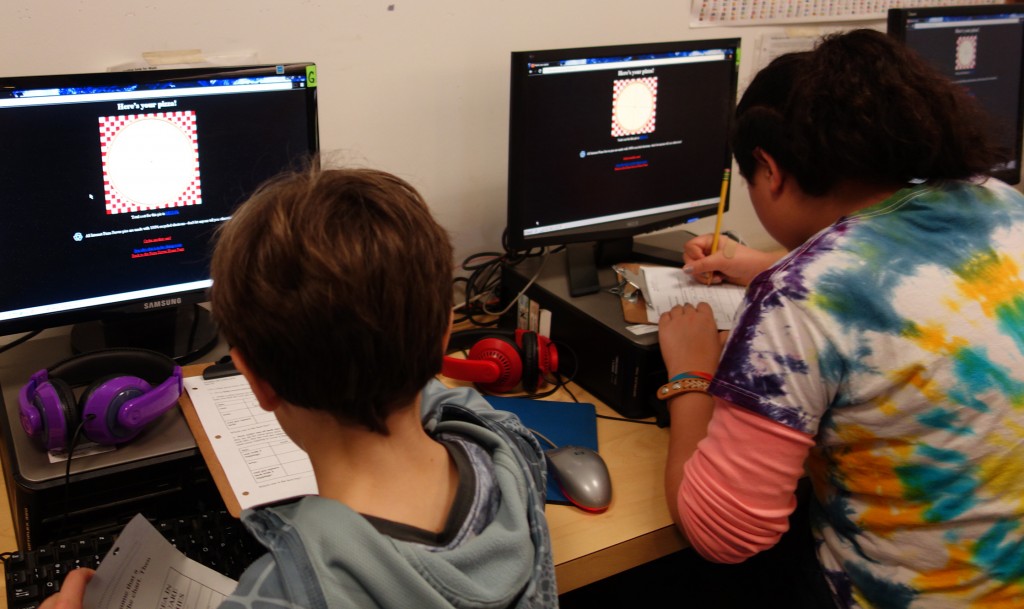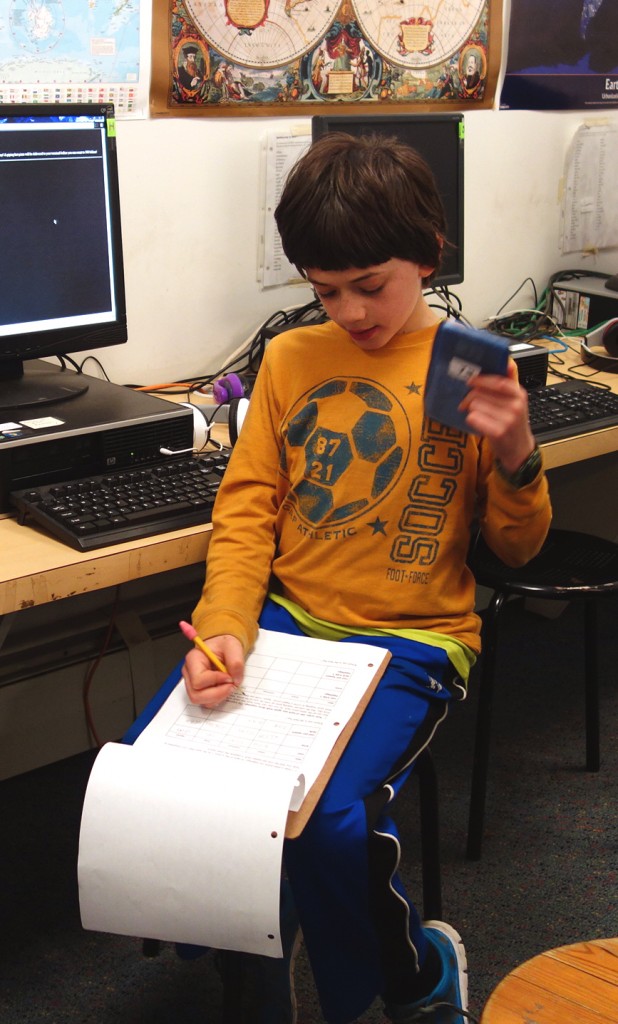We came back from Spring Break to do some final explorations of “circle” math. Students have gazed at the very long pi poster on the wall above the windows for months. A few have started memorizing as much of it as they can. But what’s it all about?
We agreed that the measuring we had done before the break was difficult, especially finding the circumference of round things. We reviewed the structural nature of circular things. A cylindrical container is strong because the push-out stress of whatever is in it is equalized. One student observed that we had just been learning about the importance of the arch in Roman architecture — and an arch is similar to a half-circle. (What a wonderful connection!) We also discussed the economy of circular structures — the amount of fence you would need for a square or rectangular space would enclose more area if the shape of the yard was round. Students spontaneously named several cultures that have built round houses, including the Celts, Maasai, and Inuit.
We did an activity that leads to the customary formula for finding the area of a circle: pi times the square of the radius. Students folded and cut a circle into 8 slices like a pizza and rearranged them to make something close to a parallelogram. With some guidance, they concluded that the parallelogram’s base was equal to half of the circle’s circumference and its height was equal to the radius of the circle.
So the area = the radius times half of the circumference. But the circumference is not easy to measure. Let’s try to make it simpler. We know from previous work that the circumference is equal to pi times the diameter. So half of the circumference is equal to pi times half of the diameter. We can say, then, that the area of a circle = the radius times pi times half of the diameter. Can we make it simpler yet? Half of the diameter is the radius. So now we can say that the area of a circle = the radius times pi times the radius. And that can be rearranged to become the traditional formula: area = pi times the radius squared. It was a lot of steps and transformations. Did everyone understand it? Not everyone, but everyone did see that there is a physical, visual basis for the area formula.
The final activity on Friday afternoon was an investigation into the virtual pizzas found at the Internet Pizza Server. Students laughed when they saw what they could put on their pizzas: the long list of toppings included hammers, basketballs, firecrackers, and even pizzas! We then posed the question Which of the 4 pizza sizes is the best value? How can we find out? We could see the price of every pizza with and without toppings, but that didn’t give us enough information. With some thought, the group agreed that finding the area of each size would let us work out the price per square inch. Fortunately, the pizzas are shown on a checkered tablecloth:
We said that each square on the tablecloth would represent a square inch and that we would count partial squares as a half-inch. So we can measure the diameter and, from that, calculate the radius and use the area formula we had just developed. With some counting and re-counting, students were able to complete a worksheet that gave them the area of each size.
Now what? Do we divide the cost by the area or the area by the cost? I drew a square pizza (okay, it was a tomato pie) on the whiteboard nearby and divided it into 4 square pieces. And I wrote a price next to it: $12. What does each piece cost? We put $3 on each piece and agreed that the money was what got divided. Students wobbled in and out of this idea several times and found that it was helpful to take another look at the model on the board.
For most students, what we have done with circle math is very much in a developing stage and not secure conceptually or procedurally. However, the experiential foundation has been laid. The next time this is a topic of instruction, it will not seem entirely unfamiliar.



